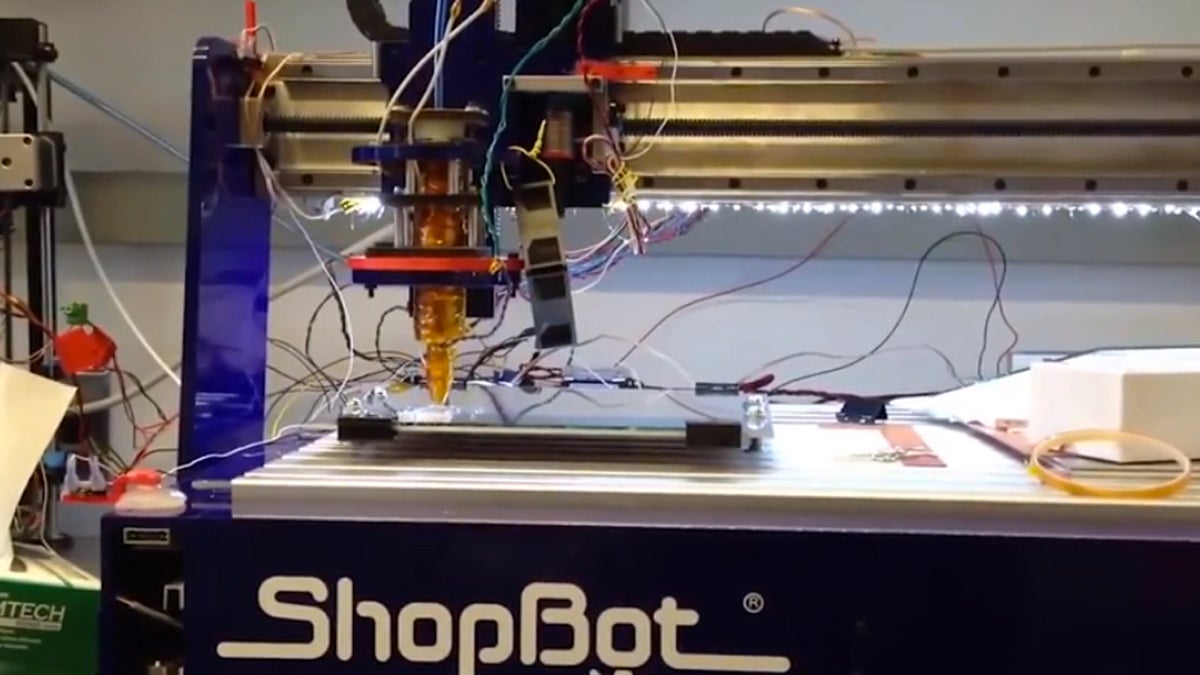Computer hackers and bio-medical engineers collaborate to create human organs from scratch
Listen
The ShopBot 3D printer lays down carbohydrate tubing that will form a vascular system to nourish the cells as layers of human tissue are 'printed'. (University of Pennsylvania/Kurtis Sensenig )
What kind of promise does 3D organ printing hold for our future?
Bioengineer Jordan Miller loves the mechanical whir of his ShopBot 3D printer as it lays down layers of human cell material in his research lab at Rice University. Even after many years of research in bio-printing, the printer still fascinates him.
“It still draws my attention,” says Miller. “It’s still mesmerizing to me.”
If you are just catching up to the world of 3D printing, a process that “prints” a three dimensional object from a digital image by laying down consecutive layers of material, the notion that researchers are using the machines to create viable human tissue for medical research may sound like science fiction.
When he started his postdoctoral research at University of Pennsylvania in 2008, Miller teamed up with the computer technology community to co-found Philadelphia’s Hive76, a hacker/maker space. The bioengineer had no training or experience in working with 3D printers. He found the hacker/maker community welcoming and undeterred by the challenge of adapting equipment normally used to fabricate plastic objects into equipment that could create human tissue.
“Coming together at a place like Hive76 allowed me to find the right people to collaborate with to teach me how to use a 3D printer,” says Miller.
The research is still experimental, but Miller and others in the field are working towards the ability to 3D print everything from skin to complex human organs.
“The long term goal of regenerative medicine is to make a tissue from scratch using [the patient’s] cells, says Miller.
WHYY is your source for fact-based, in-depth journalism and information. As a nonprofit organization, we rely on financial support from readers like you. Please give today.



